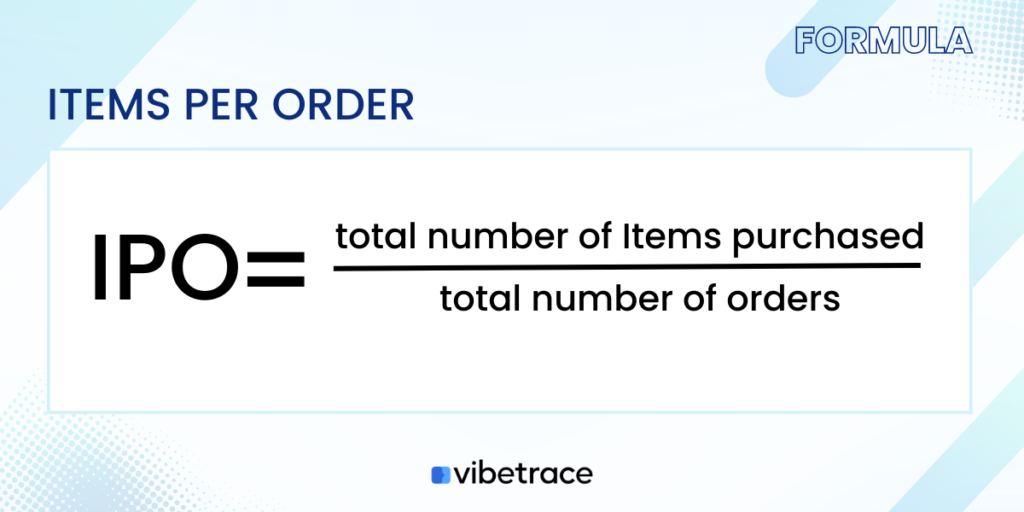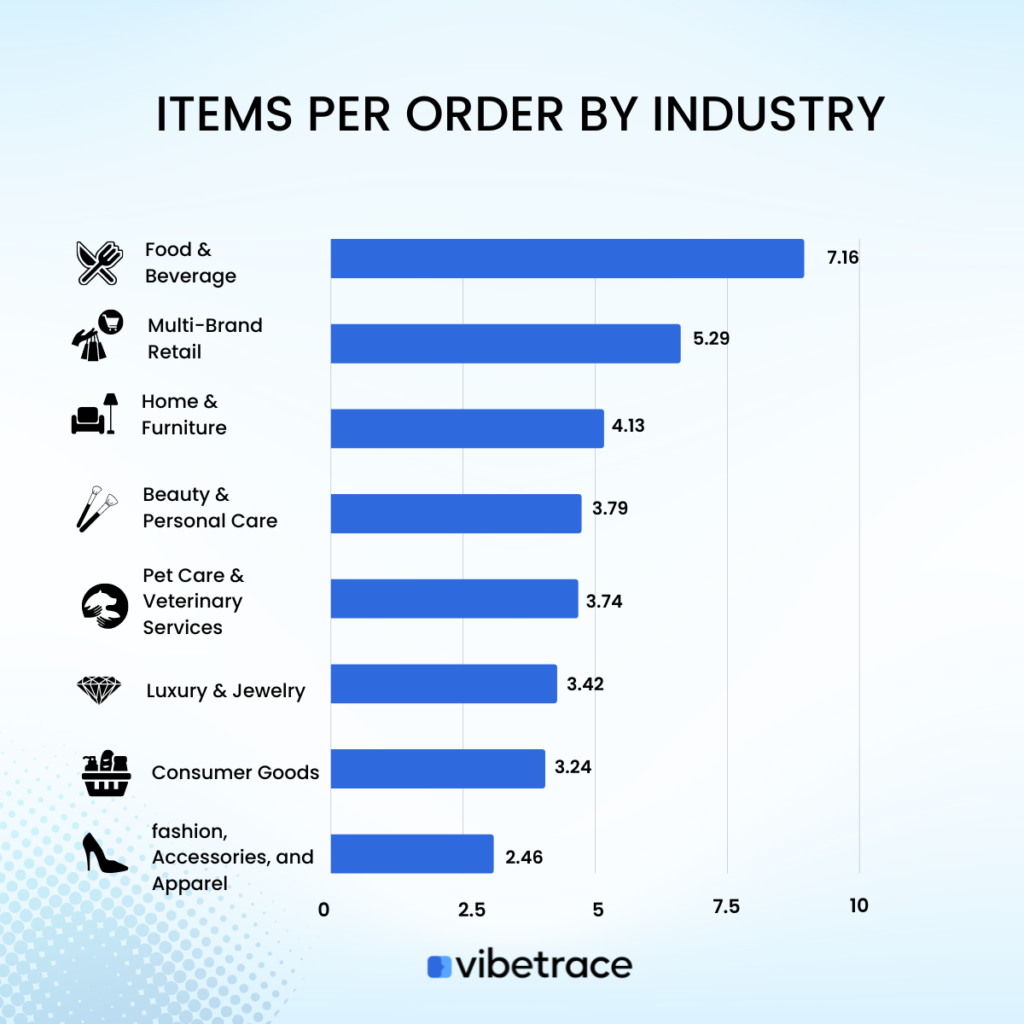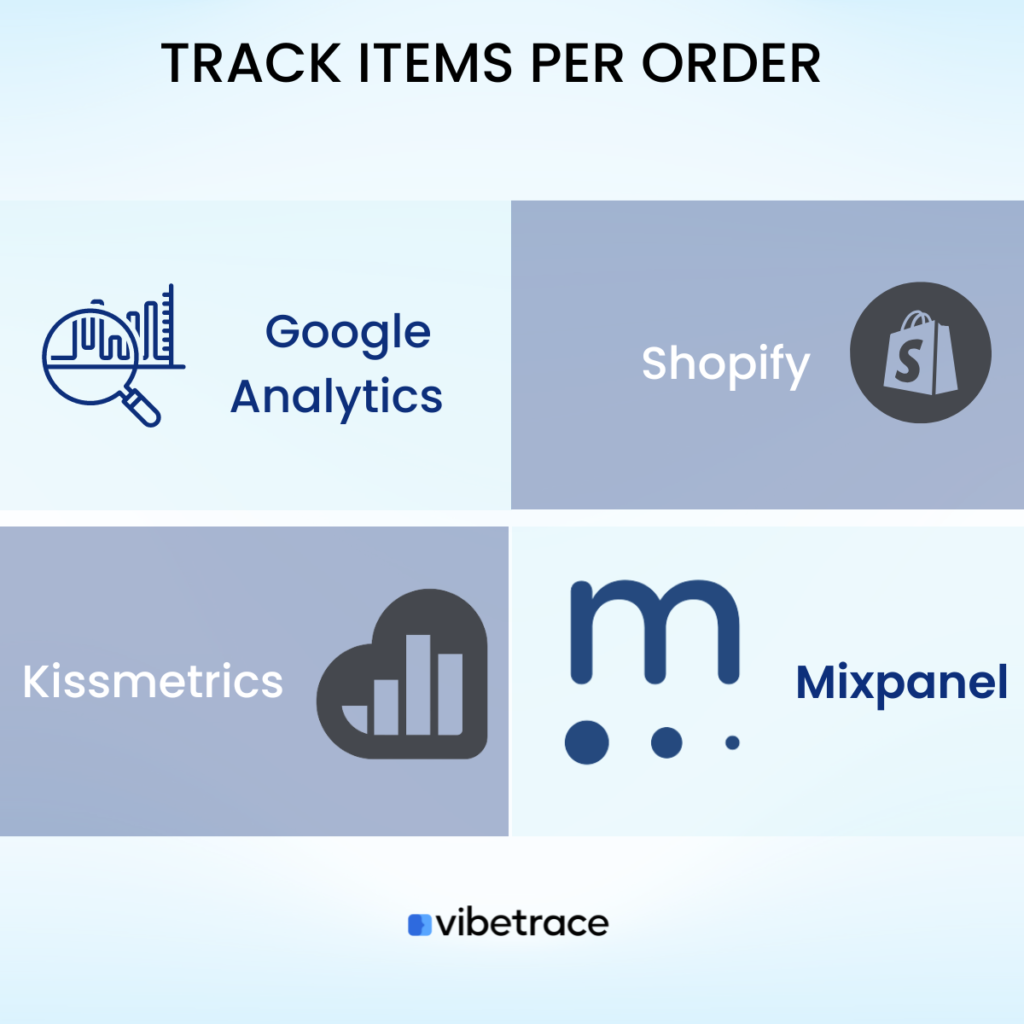Items per order is a sales metric that provides insight into customers’ activities and behavior.
In the world of e-commerce, most businesses are constantly looking for ways to increase their revenue and profitability.
E-commerce businesses can gain valuable insights into customer behavior and make data-driven decisions to optimize sales and marketing strategies.
Learn more importance of items per order, its calculation, and how you can use this metric to improve your e-commerce performance.
What is Items per Order?
Definition of Items per order
Items per order refer to the average number of items that are purchased in a single transaction or order.
This metric is commonly used in retail and e-commerce industries to understand the purchasing behavior of customers and to measure the effectiveness of marketing and sales efforts.
For example, if a customer places an order for three items, then the “items per order” metric for that transaction is 3.
Is Items per Order Metric same as Units Per Transaction?
“Items per order” and “units per transaction” are generally the same metric and are used interchangeably to refer to the number of items that are sold in a single transaction.
They both represent the number of products or units purchased in a single order or transaction.
However, in some cases, “units per transaction” may refer specifically to the number of physical units sold (e.g., individual items or products), while “items per order” may include both physical items and digital items (e.g., ebooks, music downloads) or other intangible items that are sold in a single order or transaction.
Higher value of Items per Order:
- Usually this has a higher abandoned cart value
- There is a bigger chance of increasing customer retention.
Regardless of the specific terminology used, the metric is an important one for you to track as it provides insights into your customer behavior and can help inform strategies to increase revenue per transaction.
Items per Order Formula
The formula to calculate items per order is:

For example, if you sold 100 items in a day through 25 orders, then the items per order would be:
Items per Order = 100 / 25 = 4
This means that, on average, customers are purchasing 4 items per order.
Items per Order by Industry
Here’s the average Items per Order by industry:

| Industry | Items per Order |
| Food & Beverage | 7.16 |
| Multi-Brand Retail | 5.29 |
| Home & Furniture | 4.13 |
| Beauty & Personal Care | 3.79 |
| Pet Care & Veterinary Services | 3.74 |
| Luxury & Jewelry | 3.42 |
| Consumer Goods | 3.24 |
| Fashion, Accessories, and Apparel | 2.46 |
The latest data of dividend yield as of February 2023 provides insights into the average items per order by industry.
As shown on the table, the industries included in the data are beauty and personal care, home and furniture, food and beverage, pet care and veterinary services, multi-brand retail, fashion, accessories, and apparel, consumer goods, and luxury and jewelry.
The data shows that the food and beverage industry has the highest average items per order at 7.16, indicating that customers tend to purchase multiple items in a single order when shopping for food and beverages.
Home and furniture and multi-brand retail also have high average items per order at 4.13 and 5.29, respectively, suggesting that customers tend to purchase several items when shopping for home goods or from a variety of brands.
On the other hand, the fashion, accessories, and apparel industry has a relatively low average items per order at 2.46, indicating that customers tend to purchase fewer items in a single order when shopping for clothing and accessories.
The other industries in the data, including beauty and personal care, pet care and veterinary services, consumer goods, and luxury and jewelry, fall somewhere in between these ranges.
This data identify valuable insights into the purchasing behavior of customers across different industries and can help you understand your customers’ expectations and optimize their sales and marketing strategies accordingly.
How to track Items per Order?
Regularly monitoring items per order can help you make data-driven decisions to improve your e-commerce performance.
There are several tools available to track items per order. Here are a few options:

Google Analytics: Google Analytics is a free web analytics service for tracking e-commerce transactions, including items per order. You can use Google Analytics to track the number of items purchased in each transaction and other related metrics such as average order value by enabling e-commerce tracking on your website.
Shopify: Shopify is an e-commerce platform that provides built-in analytics to track key metrics, including items per order. The analytics dashboard provides a detailed view of your store’s performance, and you can drill down to view metrics such as average items per order.
These are just a few of the many tools available to track items per order. Depending on your needs and budget, you may want to explore other options as well.
How often should you check Items per Order Metric?
The frequency of checking the items per order metric depends on the size of your business and the volume of transactions.
In general, it is a good practice to monitor this metric on a regular basis, such as daily, weekly, or monthly, to track changes in customer behavior and identify trends over time.
Daily or Weekly: If you have a small business with lower transaction volumes, checking items per order on a daily or weekly basis may be sufficient to gain insights into customer behavior and make adjustments to sales and marketing strategies.
Monthly: If you do not have big variations between weeks or seasons, a monthly check should be enough.
Items per Order Calculator
Do you want to calculate your Items per Order? Use our simple calculator below.
Simple Items per Order Calculator
Number of Items purchased:
Number of Orders
Items per order
= ?
Important Things about Items per Order
Here are some important things to keep in mind about items per order:
Vary by product category: Items per order can vary based on the type of goods sold. For example, customers may buy more e products in a single order of low-cost, consumable items such as toiletries but fewer items of high-value items such as electronics.
Affects average order value: Items per order vary is an important consideration when calculating the average order value (AOV). You can boost your AOV and create more income for each transaction by raising the number of items per order.
Influenced by promotions and discounts: Offering promotions and discounts, such as buy-one-get-one-free or free shipping on orders over a particular amount, will entice your customers to buy more things in a single transaction, boosting your items per order metric.
Do you like this article?
Join our CX for Retail dedicated newsletter!

Stay connected to what’s really important to optimize your digital revenues.
By clicking the button, you accept our Terms & Conditions. Also you will need to confirm your email address.
Used to segment customers: You can identify groups of customers that prefer to purchase more things in a single order by evaluating items per order data. This can be used to inform focused marketing and sales efforts to enhance the number of items per order and your business’ overall revenue.
Reveal operational inefficiencies: Customers placing several orders with just a few of items each order may suggest operational inefficiencies such as high shipping costs or slow delivery times. Addressing these issues can boost client satisfaction and increase the number of items per order.
Simply put, Items per order is a valuable metric that can provide insights into your customer behavior and inform strategic decision-making for e-commerce businesses.
Metrics related to Items per Order
There are several metrics related to items per order that you may want to track:
Customer Lifetime Value
The estimated total value of a customer to a business over the course of their lifetime
Repeat Purchase Rate
The percentage of customers who make more than one purchase from your website.
Time on Site
The amount of time visitors spends on your website.
Average Order Value
Return on Marketing Investment
The return on investment in a marketing or advertising campaign
With the proper strategy, you’ll be able to increase your customer’s orders on your website but you must also take note that it is a good option to make your work easier in promoting your business through proper automation.
Vibetrace is here to help you achieve your goals with the power of an email marketing tool with tons of templates readily available for your personalized email to keep customers engaged in buying more items through upselling and cross-selling.
Join Vibetrace mailing list and learn more valuable information and updates!

